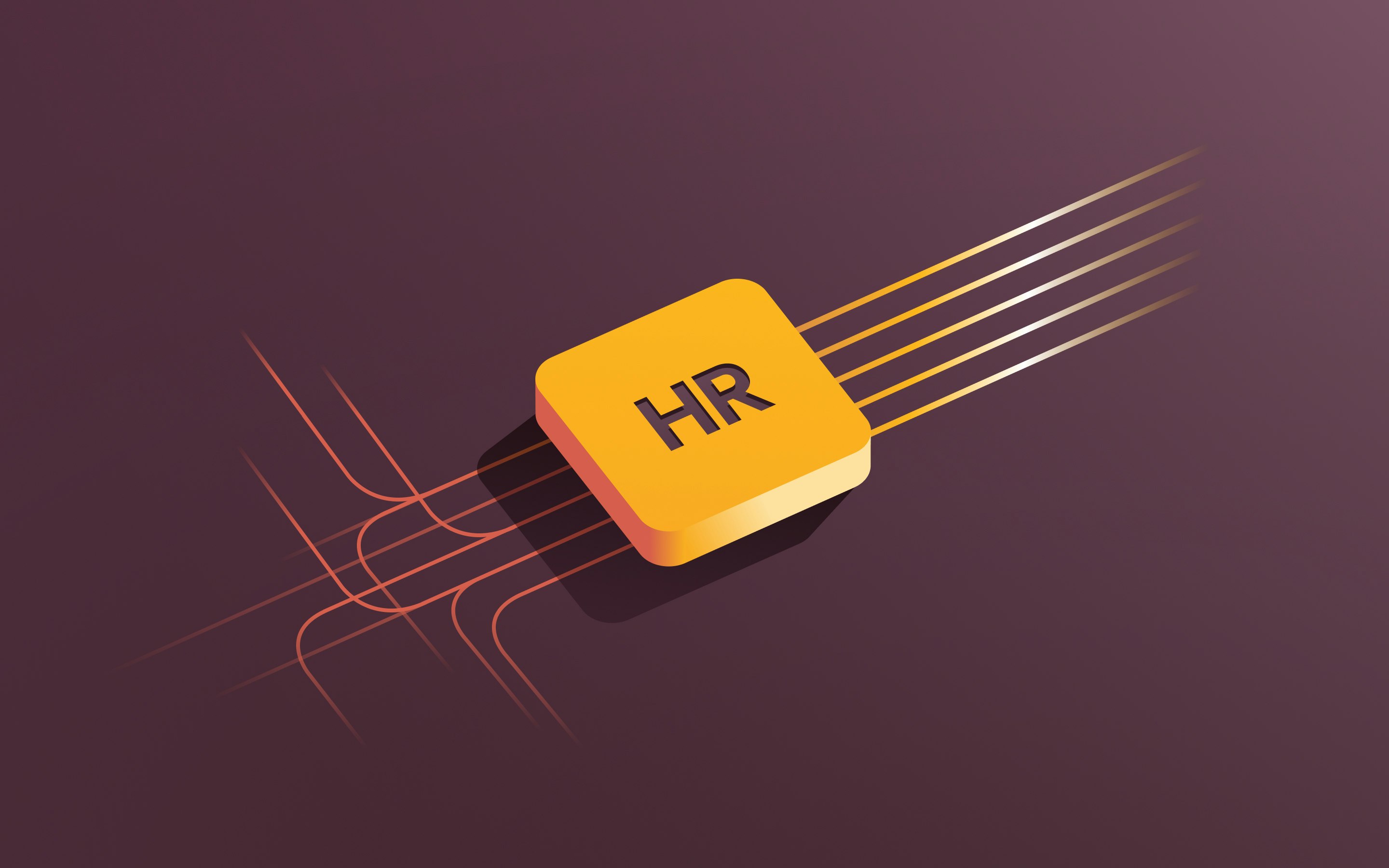5 best HR tools every company needs to know in 2025

Human resource (HR) management has evolved significantly, with businesses increasingly relying on HR tools to automate and streamline their workforce operations. From recruitment to payroll, modern HR tools enhance efficiency, accuracy, and compliance, making them indispensable for HR managers and company executives.
In this guide, we’ll explore the best HR systems in 2025, covering various categories of software that help businesses manage their HR processes more effectively.
What is an HR tool?
An HR tool is software designed to help businesses manage and optimize their human resources functions, from hiring and onboarding to payroll and performance tracking. These tools enable HR teams to automate administrative tasks, maintain compliance, and streamline workflows, allowing companies to focus on strategic initiatives.
HR software solutions vary widely, ranging from standalone applications that address specific HR tasks to comprehensive platforms that integrate multiple functions under one system. The most effective HR tools reduce manual work, improve accuracy, and enhance employee engagement, making them essential for businesses of all sizes.
6 types of HR tools & software
HR tools come in different categories, each serving a specific aspect of human resource management. Here are the key types of HR software solutions businesses can leverage to optimize workforce management:
HR management software tools
- HRMS & HRIS: Human Resource Management Systems (HRMS) and Human Resource Information Systems (HRIS) store and manage employee data, automate payroll processing, streamline time and attendance, and facilitate benefits administration. These platforms improve workforce efficiency and ensure compliance. Examples include Rippling, Workday, and SAP SuccessFactors.
Recruiting and staff management tools
- Applicant tracking system (ATS): ATS solutions help HR teams organize candidate information, automate resume screening, and streamline interview scheduling, making recruitment more efficient. Examples: Greenhouse, Lever.
- Talent management system (TMS): TMS platforms assist with developing, managing, and retaining employees through succession planning, training programs, and performance tracking. Examples: Oracle Taleo, Cornerstone OnDemand.
- Onboarding software: These tools simplify the new hire process by digitizing paperwork, automating training schedules, and ensuring seamless integration into company culture. Examples include Rippling and BambooHR.
Employee performance management tools
- Performance review platforms: These tools facilitate structured employee evaluations, feedback collection, and goal-setting to drive productivity. Examples: Lattice, 15Five.
- Employee engagement & feedback tools: Platforms that help collect real-time employee feedback, monitor engagement levels, and enhance workplace culture. Examples include Culture Amp andTINYpulse.
- Goal & OKR tracking tools: Businesses use these solutions to define, measure, and track key objectives. Examples: Betterworks, Workboard.
Education and learning tools
- Learning management system (LMS): LMS platforms support employee training and development through online courses and skill-tracking features. Examples include Docebo and TalentLMS.
- Industry resources (Books, Podcasts, Blogs): HR professionals rely on a variety of resources to stay informed about the latest trends and best practices in HR.
Communication and productivity tools
- Project & task management software: These platforms help HR teams and employees stay on top of tasks and manage workloads efficiently. Examples include Asana and Trello.
- Workplace messaging apps: Instant messaging tools facilitate quick and effective communication within teams. Examples include Slack and Microsoft Teams.
Payroll & benefits administration tools
- Payroll management software: Automates payroll processing, tax compliance, and employee compensation to reduce administrative workload. Examples include Rippling and Gusto.
- Benefits administration platforms: These tools help HR teams manage employee benefits such as health insurance, retirement plans, and wellness programs. Examples include Zenefits and Namely.
- Compensation planning tools: Platforms that assist HR teams in designing competitive salary and bonus structures based on market trends and performance evaluations. Examples include Payscale and Salary.com.
5 best HR tools to manage your workforce
1. Rippling
Rippling is an all-in-one HR platform designed to streamline workforce management through automation. It integrates payroll, benefits, IT management, and compliance tracking into a single system, making it an ideal choice for businesses of all sizes.
Key Features:
- Automated onboarding and offboarding
- Payroll processing with global capabilities
- Benefits administration and compliance tracking
Pros: Comprehensive automation; seamless third-party integrations
Cons: Requires additional setup for complex compliance needs
2. BambooHR
BambooHR is a popular choice among small and mid-sized businesses for its intuitive interface and effective employee management tools. It provides a centralized platform for tracking employee records and managing HR workflows.
Key Features:
- Employee self-service portal
- Customizable HR reporting
- Performance tracking tools
Pros: Easy to use; strong customer support
Cons: Limited payroll capabilities
3. TriNet
TriNet is a professional employer organization (PEO) that provides outsourced HR services, allowing companies to focus on their core business operations while ensuring compliance and efficiency in HR management.
Key Features:
- Full-service payroll and tax administration
- Employee benefits management
- HR compliance support
Pros: Ideal for small businesses needing outsourced HR services
Cons: Payroll processing only available with higher-level subscription
4. Paylocity
Paylocity offers cloud-based payroll and HR solutions tailored to businesses that need workforce management and employee engagement tools in a single platform.
Key Features:
- Automated payroll processing
- Employee communication and engagement tools.
- Mobile access for HR functions
Pros: Strong mobile capabilities; robust reporting features
Cons: Can be complex for new users
5. ADP
ADP is one of the most established HR software providers, offering scalable solutions for businesses of all sizes. It provides everything from payroll and benefits administration to compliance tracking and HR analytics.
Key Features:
- Global payroll solutions
- Tax and compliance automation
- Workforce analytics and reporting
Pros: Highly scalable; trusted by large enterprises
Cons: Users report long wait times for customer service
7 key features to look for in HR software programs
Choosing the right HR software requires careful consideration of key features that enhance efficiency, scalability, and compliance. The best HR software programs offer intuitive interfaces, seamless integrations, and automation capabilities to reduce administrative burdens. Below are some essential features businesses should look for when evaluating HR management tools.
1. Intuitive user experience
An HR tool should be user-friendly, allowing HR teams and employees to navigate features easily without extensive training.
2. Quick implementation
Businesses need HR software that can be deployed quickly to minimize disruptions in daily operations.
3. Seamless integrations
HR software should connect with existing payroll, accounting, and project management systems to create a unified workflow.
4. Employee self-service functionality
Employees should have access to update personal details, request time off, and manage benefits through a self-service portal.
5. Customization capabilities
The ability to tailor the software to match business needs ensures better alignment with HR processes.
6. Scalability
The software should support business growth and adapt to changing workforce sizes.
7. Security and compliance tools
Strong data protection measures and compliance tracking software help businesses stay aligned with legal and regulatory requirements.
How to choose the right HR tools for your business
Selecting the best HR tools for your organization requires a strategic approach. The right HR software should align with your company’s current needs while also providing scalability for future growth. Here are key factors to consider when evaluating HR software solutions:
1. Assess your business needs
Before investing in an HR system, evaluate your current HR processes to identify pain points. Determine whether you need support with payroll management, recruiting, staff management tools, employee engagement, or performance tracking. Understanding your primary HR challenges will help you choose a solution tailored to your business requirements.
2. Consider your company size and future scalability
HR software should grow alongside your business. Small businesses may prioritize affordability and ease of use, while larger enterprises require robust HR systems with advanced automation, compliance tracking, and workforce planning features. Selecting scalable software ensures long-term efficiency.
3. Evaluate ease of use and integration features
An intuitive user interface is critical for adoption by both HR teams and employees. Look for HR software tools that integrate with existing platforms such as payroll software, applicant tracking systems, and communication tools to create a seamless workflow.
4. Ensure compliance and security measures
Compliance with labor laws and data protection regulations is a top priority. Choose HR software that offers automated compliance tracking, secure data encryption, and audit-ready reporting to protect employee information and meet legal requirements.
5. Compare pricing and customer support options
Different HR software providers offer varying pricing structures based on company size, features, and subscription models. Compare costs to ensure the solution fits within your budget while providing essential functionalities. Additionally, consider the level of customer support available, including live assistance, knowledge bases, and training resources.
Streamline HR & workforce management with Rippling
Rippling is a comprehensive, single-system solution for HR, payroll, spend, and IT, providing businesses of all sizes with the tools they need to manage their workforce seamlessly. Its integrated human capital management (HCM) removes barriers between key HR functions, including payroll, benefits administration, headcount planning, and learning management, ensuring a unified and efficient experience.By automating time-consuming HR tasks, Rippling enables businesses to eliminate administrative bottlenecks, maintain compliance, and empower employees with self-service tools. Whether managing payroll, onboarding new hires, or tracking workforce data, Rippling’s all-in-one HRIS platform offers a scalable solution designed for global businesses.
FAQs on HR tools
What tools does HR use?
HR professionals use various tools, including payroll software, recruitment platforms, performance management systems, and employee engagement applications, to streamline workforce operations.
What are the 7 HR basics?
The seven core HR functions include recruitment, employee relations, compensation and benefits, compliance, training and development, workforce planning, and performance management.
What is the most popular HR software?
Some of the most widely used HR software solutions in 2025 include Rippling, BambooHR, ADP, Workday, and Paylocity, offering a range of HR, payroll, and workforce management features.
This blog is based on information available to Rippling as of April 1, 2025.
Disclaimer: Rippling and its affiliates do not provide tax, accounting, or legal advice. This material has been prepared for informational purposes only, and is not intended to provide or be relied on for tax, accounting, or legal advice. You should consult your own tax, accounting, and legal advisors before engaging in any related activities or transactions.










